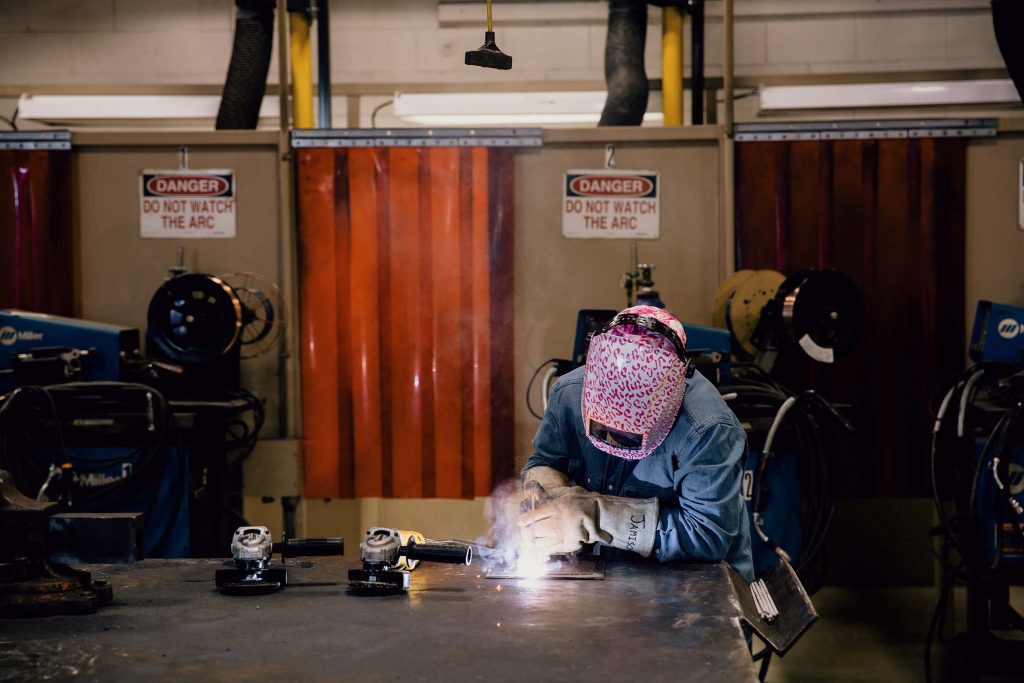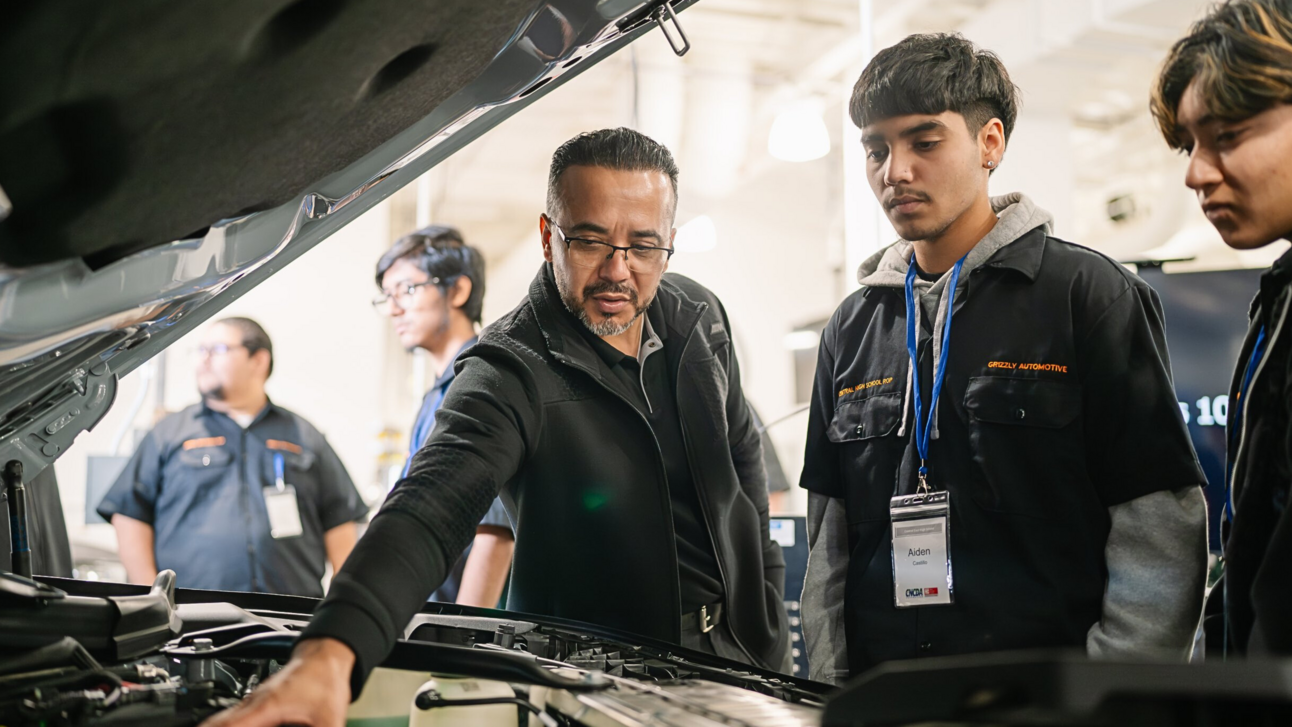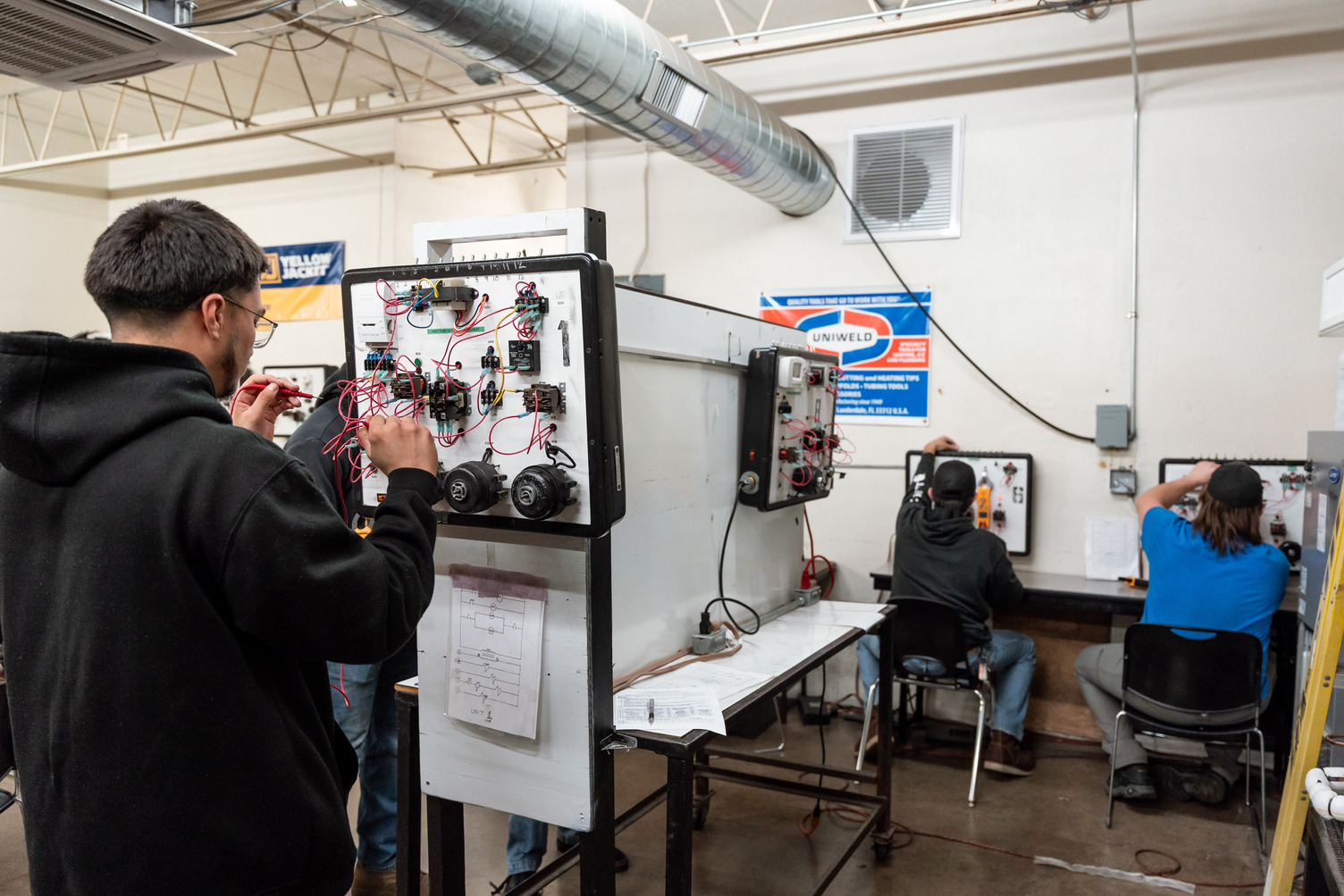When you think about it, employers today care more about what you can do than where you went to school. That’s why work-based learning (WBL) models, where students earn while mastering trades, are proving decisive in closing the skills gap. And the numbers speak for themselves: 68.2% of trade school graduates land jobs in their field within six months, beating out traditional college grads by 11 percentage points 1. That's not an accident. These programs are built around what actually happens in the workplace. Let’s see how combining classroom theory with paid, hands-on training creates better paths to employment in fields like construction, healthcare, and advanced manufacturing.

What Makes Work-Based Learning Work
The best trade school job placement programs share three non-negotiable features: relevant tasks, fair pay, and tight classroom integration.
Real Work Builds Real Skills
Effective programs put tools in students’ hands from day one. At Tulsa Welding School, trainees spend 70% of their time in bays practicing joints they’ll use on pipelines. “My instructor made me redo this stainless steel T-joint 12 times,” says recent grad Marisol Reyes. “Now I’m the first hire my oil rig crew recommends for precision jobs.” This aligns with research showing how apprentices retain 75% of skills learned through hands-on repetition versus 20% from lectures 2.
Paychecks Motivate Progress
Compensation encourages learning. Arizona’s automotive tech apprentices earn $18/hour while training at dealerships. “Getting paid made me take it seriously,” says single mother Lydia Cho, who tripled her pre-program income post-graduation 3. Data shows paid participants are 63% more likely to land full-time roles than unpaid peers.

Classrooms That Mirror Job Sites
Palm Beach State College revamped its HVAC program after employer feedback. Now, morning lectures on refrigerant cycles lead to afternoon installations at local contractors. The result is a 22% jump in certification pass rates and 91% job placement within three months 4.

Why Trade School Graduates Get Hired Faster
Employer Partnerships Cut the Guesswork
When Fort Myers Technical College partnered with Seminole Fabrications, something clicked. The manufacturer provided CNC machines matching their shop floor models. Now, 85% of machinist grads like Javier Mendez walk into $38,000/year roles. “They already know our G-code standards,” says Seminole’s HR director 1.

Certifications Open Doors Earlier
Plumbing students licensed before graduation earn 18% more than peers 6. Tulsa’s electrician program builds licensing exams into final exams, no costly delays. “Pass your practicals, walk out with a journeyman card,” says instructor Hank Vollmar.
Hands-On vs. Classroom: A Hiring Manager’s Perspective
We asked Kendra Boltz, who hires for a 200-worker electrical firm:
“Trade school grads arrive knowing how to bend conduit and interpret NEC codes. Meanwhile, college interns are still Googling wire gauges.”
Data backs her view:
- Speed to Job: 14-month dental assistant programs place graduates 2 years faster than biology BA holders.
- Earnings Advantage: Electrician apprentices clear $40k during training with no student loans.
Solving the Experience Catch-22
Trade programs bypass the “no job without experience” trap. Take Missouri’s State Technical College:
- Year 1: Learn welding basics via VR simulators avoiding material waste 7.
- Year 2: Paid internships at Titan Trailer Factory with mentored production-line shifts.
Result? 94% job placements and a 43% dropout reduction since 2022 8.
How Industries Are Shaping Training
Toyota’s Georgetown plant co-designed Kentucky’s hybrid vehicle repair courses. Technicians teach weekly labs using actual Prius battery packs. “We’ve hired 76% of their grads,” says plant manager Lou Rivera 9.

Fixing Common Program Hurdles
Time Conflicts Become Time Wins
Nashville Tech’s block schedule clusters academics on Mondays, freeing Tues-Fri for paid internships. Enrollment jumped 31% since 2024 10.

Small Business Engagement Boost
Michigan’s tax credit program pays $2,500 per hosted intern. Bellaire Cabinetry now trains three joiner apprentices annually. “They offset labor costs while we grow talent,” says owner Amir Khouri.
Tracking What Truly Matters
Beyond Graduation Day
Tennessee’s longitudinal study found HVAC grads averaged $62k by year five, outpacing 40% of four-year grads.
Employer Report Cards
Colorado’s feedback system lets companies rate punctuality and troubleshooting. Low scores triggered a new Denver toolchain safety module last March 11.
Students Are the Best Judges
When Georgia’s HVAC trainees demanded augmented reality tutorials, instructors listened. AR fault diagnosis drills boosted certification rates 19% 12.
From Classroom to Career Launchpad
The proof is Tulsa welding alum Ramon Gutierrez:
“My internship supervisor recommended me for a foreman spot. Three years in, I’m training new apprentices.” His secret? > “They’d already seen my work.”
Why Trade Schools Are Getting It Right
Trade schools succeed because they make education feel like the actual job. When students are earning paychecks through apprenticeships, working in labs that mirror real workplaces, and earning credentials that employers trust, you're creating the workforce companies desperately need. Sure, it's not perfect everywhere. Not every region has a Toyota willing to partner up and invest heavily in local programs. But when you look at success stories like Michigan's tax credit system, you can see how this approach can work on a bigger scale. As robotics reshape factories and hospitals, the demand for hands-on experts will only grow. The trade schools that understand this, that keep putting real tools in students' hands while making sure they can pay their bills are building the workforce of tomorrow.

